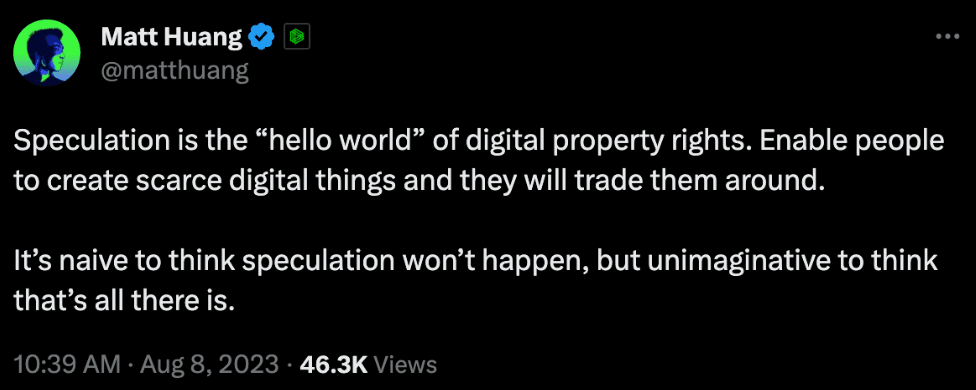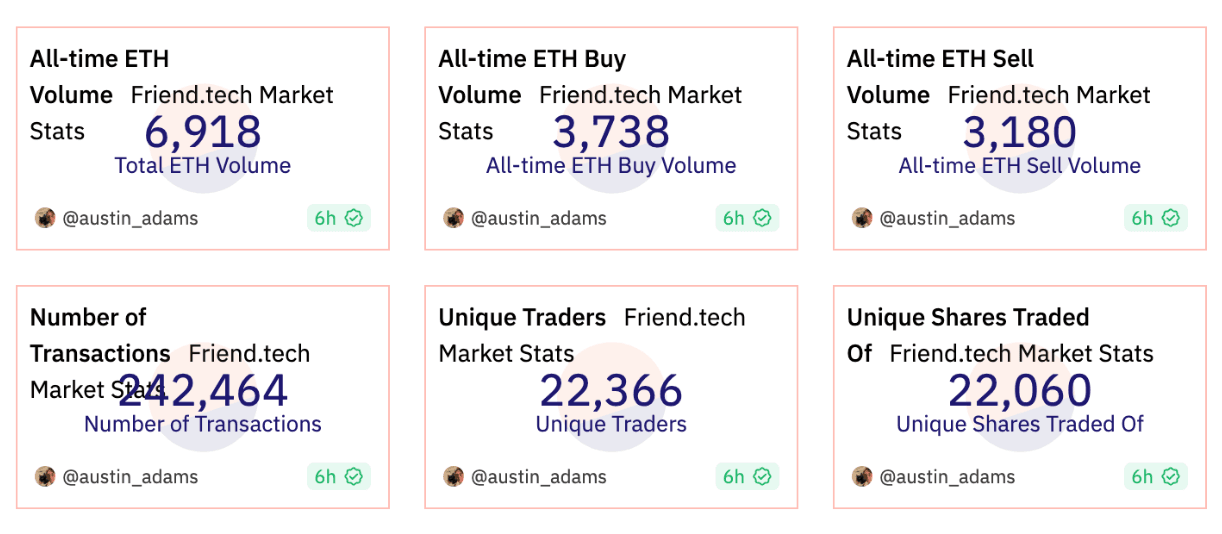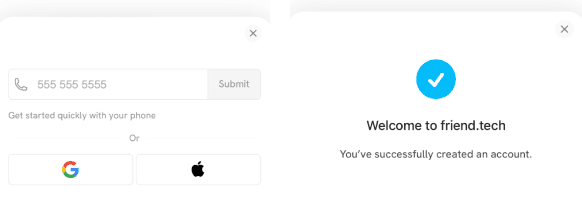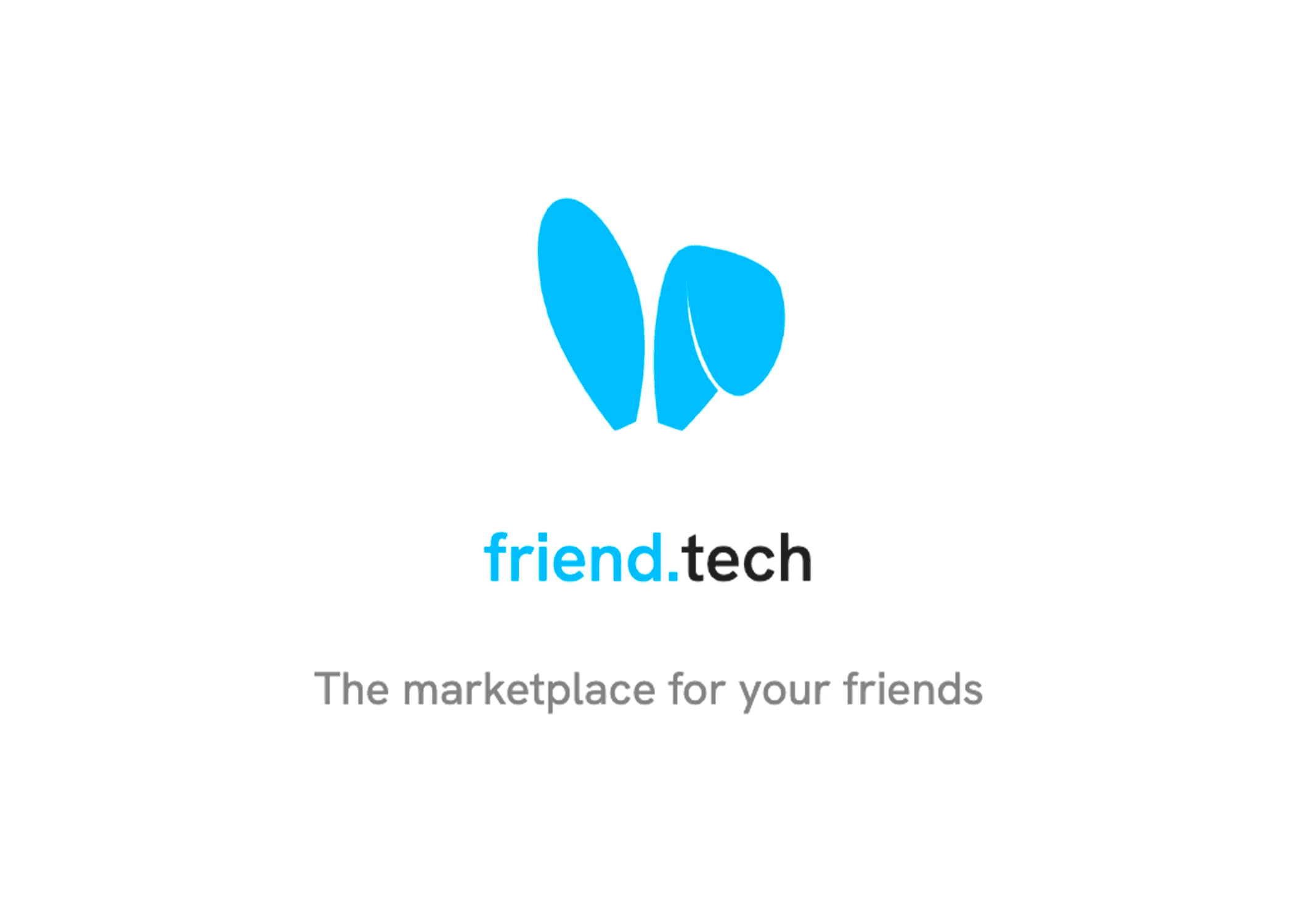Friend.tech: The power of native products, built for everyone
Max Segall
|Aug 15, 2023

Last week friend.tech brought tens of thousands of users onchain securely over the course of a few days by combining a delightfully engaging app with decentralized systems. The result is a unique social experience that teaches us something about where the space is going.

If you were active on Crypto Twitter this weekend, you likely saw hoards of people clamoring to learn more about friend.tech and get access to invite codes for web3’s hottest new app. It’s not every day that web3 consumer apps manage to onboard tens of thousands of real users over the course of a weekend; other builders in the space should pay close attention.
At Privy, we see this launch as a turning point for web3 app development. Friend.tech’s success is the result of thoughtful product design from a talented team but it’s also a showcase for how far web3 infrastructure has come. We’re so excited by the wave of unique products coming in the space and we think Friend.tech lights the way ahead. In this post we’ll break down some of the alchemy as we saw it and why we believe it stands as a new standard for mainstream apps in crypto.
Their team did an amazing job combining several core innovations that all web3 app developers should take note of, Namely: 1) native game mechanics, 2) great use of PWAs and 3) seamless account onboarding.
Let’s dive in!
Game mechanics: a native social game
Friend.tech, which launched last Thursday on the heels of the Base mainnet launch, is an invite-only web3 social app that allows users to buy and sell “shares” of other users’ connected Twitter accounts. Users can onboard to friend.tech with a phone number, Google or Apple account and immediately get a self-custodial wallet provisioned for them through Privy. Once they’re onboarded, users can purchase shares, which grant them access to private chatrooms with the Twitter account owner and other “share” owners.
Notably, all of these shares are tracked in a smart contract and their price is tied to a bonding curve. Simply put, the more shares of someone are purchased, the more their price goes up. The more are sold, the cheaper they get.
Ok. What now?
To start, friend.tech effectively leveraged token dynamics to create incentives for early players. For every share of yours that is purchased or sold, you earn a portion of a transaction fee. This creates a big incentive to be early in the game and drive interesting content within your chat to drive more users to it. By getting the “who’s who” of the Crypto Twitterverse into the app early and making the experience invite-only (users get three invite codes when joining the app), friend.tech created scarcity-driven virality for the app, bootstrapping initial adoption. Within hours, friend.tech attracted well-known Crypto Twitter personalities like Cobie, ben.eth, and Hsaka.
The opportunity to engage with these people and be a part of the phenomenon sparked the adoption wave that followed, with friend.tech topping OpenSea’s volume for a 24hr span.

And here you can notice a core part of the system: the app is built on open infrastructure. This means open data to quantify the game’s success helped reinforce its virality and developers were quickly able to break down the game mechanics to start a meta-game around the game itself. From there, custom frontends started appearing with Anish Agnihotri, for instance, building FriendMex, a “pro interface” working atop the friend.tech smart contracts.
With growth loops like these built into the app, it’s clear that this isn’t the friend.tech team’s first rodeo in consumer social but what stands out to us is the deep crypto-native mechanics used to reinforce traditional viral loops. This app is quintessentially “crypto native” and makes great use of open infrastructure and tokenomics to complement and sublimate the core experience. This serves as a good reminder of how web3 tech can be leveraged in a number of ways to create rich consumer experiences.
The tech: PWA architecture
Beyond these viral in-app dynamics, the friend.tech team leveraged another interesting tool in their distribution arsenal making the app a progressive web app (PWA).
PWAs allow developers to deliver many of the benefits of a traditional mobile app experience without requiring their users to download these apps from any specific app store.
By using PWA architecture, friend.tech is able to give users an app accessible via an icon on their home screen with everything from notifications to offline functionality without requiring an initial app store download. Since this app is delivered to the user via a browser setup (vs. an app store download), user interactions in the app aren’t subject to many of the app store limitations and fees that have kept many web3 developers on the mobile sidelines.
Seeing all of the engagement friend.tech has been able to drive with their PWA, there’s no doubt that other builders looking to drive AAA-quality consumer mobile engagement in web3 will follow suit.
We’d be remiss not to note that Privy works out-of-the-box with PWAs on iOS and Android ;)
The app design: onboarding for everyone
Obviously, we had a keen interest in how friend.tech their app accessible to everyone. Instead of requiring users to sign in with their wallets, friend.tech allows users to authenticate via SMS, Google, or Apple. Upon account creation, friend.tech provisions a self-custodial embedded wallet for every user. It’s an app built for a mainstream audience, supercharged by blockchain infrastructure under the hood.

Neither friend.tech nor Privy ever have access to the user’s private keys but the user gets a full cryptocurrency wallet, capable of everything from EIP-1193 compatible transactions to key export. The embedded wallet sits flush within the friend.tech app experience and never requires the user to download a browser extension, memorize a seed phrase, or grapple with unreliable wallet connectors and connection timeouts.
One thing to notice here is the choice by the friend.tech team to prioritize simple onboarding for users in spite of the fact that much of the app’s audience engages with crypto (at least to start). Being able to engage users quickly within the app, and without requiring them to bring their own wallets proved core to their funnel conversion.
Where we go from here
It is still early days in consumer crypto but friend.tech deftly illustrates the power of building hybrid products, leveraging the best of on and off-chain dynamics to create engaging, memorable experiences.
Regardless of where things go from here, the last few days were also thrilling in showing us how far the space has come over the past couple of years. Friend.tech leverages the Base L2 and Privy’s MPC wallets to build UX patterns that wouldn’t have been possible months ago. From here, we also see where we must continue to push to further improve consumer products in the space, starting with asset on-ramps and bridging.
We’re so excited to continue to partner with the friend.tech team to help them build out their product vision. For us, this means further work to add native on-ramps, bridging improvements, and smart contract wallets behind the scenes to make web3 experiences ever more engaging and easy-to-use.
Thank you to the friend.tech team for helping us reimagine the art of the art of the possible in web3, and for bringing tens of thousands of users (and counting) onchain!


